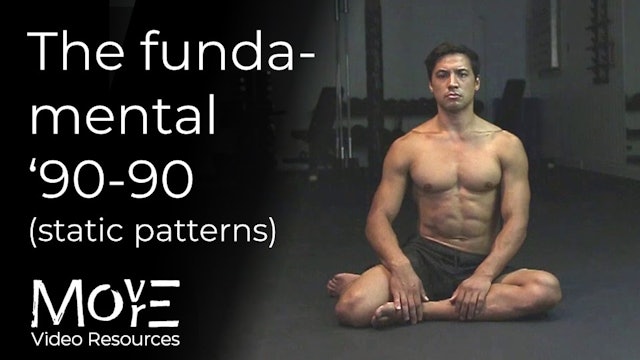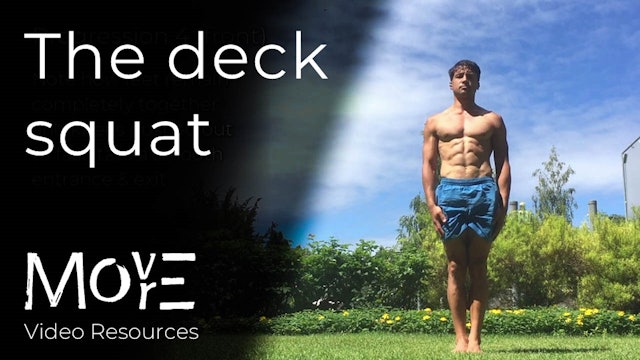Floor-entrance (FEN) & floor-exit (FEX) patterns
As a loosely applied-term, ‘floor-entrance’ (FEN) and ‘floor-exit’ (FEX) describes patterns and sequences which transition through “levels” in space toward the floor. Whilst some move simply from standing (bipedal) to quadruped (i.e. to contact with the hands also), others descend into full floor-contact either with the weight of the pelvis (i.e. seated) or entire body (i.e. lying) supported by the floor. In the same practice, methods for exiting again are given, normally through the reverse of the pattern which was used to enter.
Whilst the resources presented in this collection are intended to build a fundamental vocabulary of entering and exiting the floor with “ease and control”, the development of these qualities will in some cases require SIGNIFICANT investment in physical capacities (e.g. strength & mobility) for them to come to fruition. In these cases (e.g. FEN/FEX variations from ‘Sissy squat’ and ‘Pu-bu/Cossack to floor-entrance), the progressive tools to develop them are given elsewhere in the resource library. The majority are, however, accessible from any level and do not require any pre-requisite for productive practice.
LEARN MORE (subscriber-only):
https://drive.google.com/file/d/1zUEDQC5Al-3yLHIunOdcBx3Us3XczF_n/view?usp=drive_link
-
The Fundamental ’90-90’ (static patterns)
THE WHAT:
The ’90-90’ is essentially a common floor-seated position in which the bodyweight is shifted more unilaterally into one side of the hips, the shins forming a more-or-less square form at a 90-degrees angle.When available, it serves as a fundamental ‘zero-point’ through which high trans...
-
The Deck Squat
THE WHAT:
A most fundamental pattern for getting down and up again which goes through maximal lower-body flexion & transferring into global spinal flexion & back again. It should be performed BAREFOOT in order to give an accurate representation of you variation/progression.LEARN MORE (subscribe...
-
The 'Deck-squat' (unilateral)
THE WHAT & HOW:
Fundamental "getting up, and getting down" with a unilateral variation for the 'deck-squat'. Whilst essentially a floor-entrance/exit pattern performed through a single-leg with generally immediate availability to anyone able to perform the ‘Pistol squat’, it can be used either fo... -
The 'Fisherman squat'
THE WHAT:
The 'fisherman squat' is a fundamental 'zero-point' providing high transitional movement potential through & between the worlds of standing, kneeling, sitting, and floor-contact. It is also a common departure & arrival position for dynamic floor-contact movements, such as rolling, and i... -
Fundamental floor-entrance (FEN) & floor-exit (FEX) from seated
THE WHAT:
A most fundamental human movement pattern - entering and exiting the floor from a seated position. Regardless of age, capacities, or physical condition, it is required by EVERYONE. As such, this context is about developing EFFICIENCY, which ultimately translates to "effortlessness" - an... -
Fundamental Floor Entrances (FEN) and Exits (FEX) from squat
THE WHAT:
Entering and exiting the floor from a squat position, as opposed to only seated, now gives access to all patterns which both depart from and arrive at the position of the squat. This opens up near endless integrative potential which extends as far as the imagination and capabilities of ... -
Reach-back floor-entrance (FEN) & floor-exit (FEX)
THE WHAT:
A fundamental floor-entrance & exit variation from the squat position which begins with displacement of the body backward in space, into a seated position. The shifting of centre of the mass backward, facilitated by PUSHING from the heels and a partial SLIDING of the backside along the ... -
Fisherman squat & 'Box-turn' to knee-slide
THE WHAT:
A floor-entrance transition performed through a knee-slide which can be accessed from seated (the ‘Fisherman squat’ form) or from quadrupedal (the fundamental prone ‘box’ position). It is notable for purposes of integration, then, that this floor-entrance is accessible from any system o... -
'Wide-hand' floor entrance & exit (FEN/FEX) from seated
THE WHAT:
A variation on the fundamental ‘FEN/FEX from seated’, with which is it recommend to have already “embodied” through consistent practice before exploring this variation. The key difference here is in the mechanism & function of the arms upon entry/exit: whilst the primary ‘FEN/FEX from s... -
The 'Shoulder-stand'
THE WHAT:
The ‘shoulder-stand’ establishes an essentially diagonal axis of balance, from the base shoulder through the opposite side hip and leg. It is initially supported by the free hand planted on the floor, although can later be incrementally removed as alignment and balance calibration devel... -
Seated pike to prone (& back)
THE WHAT & HOW:
A charming little context which "maps" both the anterior & posterior "circle of the hips", or, rather, the full-circle. It comes from the perspective of "circles of the body", by which we can use them, just like wheels, to move both in and through space.In oder to place it withi...
-
The wall "Undercut"
THE WHAT:
A 2-point, ipsilateral (i.e. same side hand/foot) wall-supported transition pattern which practices “threading” the body under and through itself. A significant part of this practice, then, is developing the STRUCTURAL AWARENESS to support one’s structure with only two points of support... -
The 'Undercut' (floor)
THE WHAT:
A 2-point, ipsilateral (i.e. same side hand/foot) quadrupedal-to-floor transition pattern which practices “threading” the body under and through itself for direct access to the world of ‘floorwork’. Likewise, it can be reversed, albeit in not as efficient a manner, to return back to qua... -
Prone quadruped to lateral floor-roll
THE WHAT:
A transitional pattern facilitating movement in and out of the floor from a quadruped position to floor-contact. The main work here is developing the structural awareness & patterning (notably the “folding” of the arm to bring the body closer to and enter the floor and coordination of t... -
Cossack & knee-collapse
THE WHAT:
Whilst primarily a progressive mobility-development drill which connects a ‘knee-collapse’ with the fundamental ‘Cossack squat’, the integrated pattern ultimately functions as a convenient floor-entrance & exit (FEN/FEX) tool, allowing for bipedal floor-contact in passing through the le... -
‘Pu-bu’ to Floor-entrance (FEN) & Floor-exit (FEX)
THE WHAT:
This initially bipedal pattern provides an efficient method for entering the floor through the level of ‘low-gait’ and transitioning through what is essentially a ‘Helicopter roll’, to floor-exit. Within the patterning notice how the ‘Pu-bu’ form transitions into a COSASACK form, shifti... -
Sissy 'touchdown'/ to Role
THE WHAT:
A fundamental integration between the capacity-development context ‘Sissy squat’ and the basic ‘Role’ pattern, connecting the world of standing to the world of ‘Groundwork’ through a controlled transition into the floor. The variations are simply from isolated “touchdown”, to either a ‘... -
Standing-to-bridge contexts
THE WHAT & HOW:
Contexts for exploring a controlled transition from standing, into bridge. Whilst in its isolated practice (standing/Sissy-squat to bridge & returning) significant control in back-bending range is requested & developed, in the integrated variations it ultimately serves as a bipeda...




















